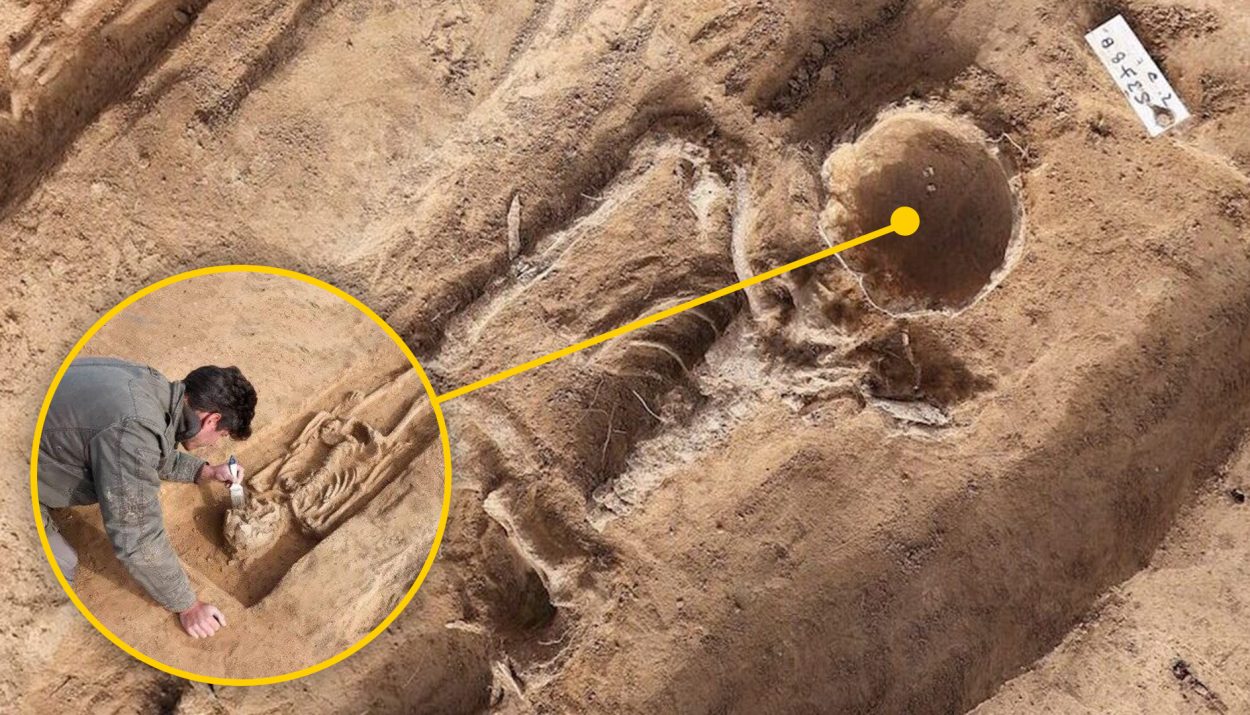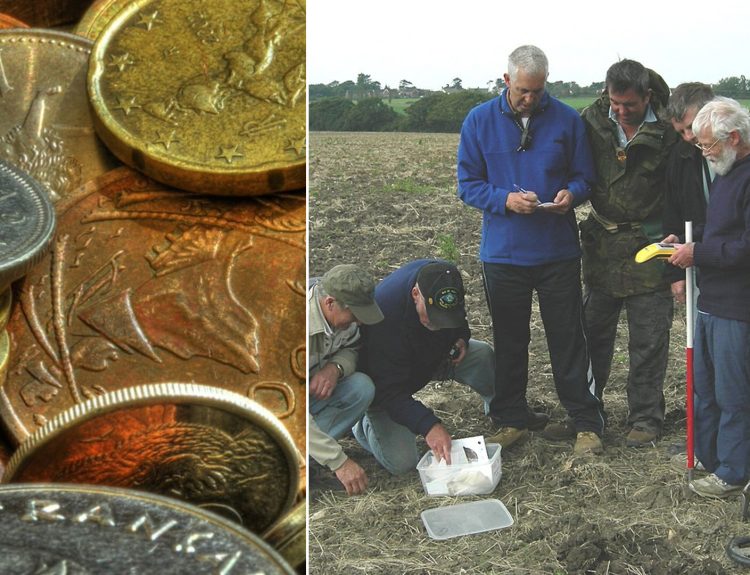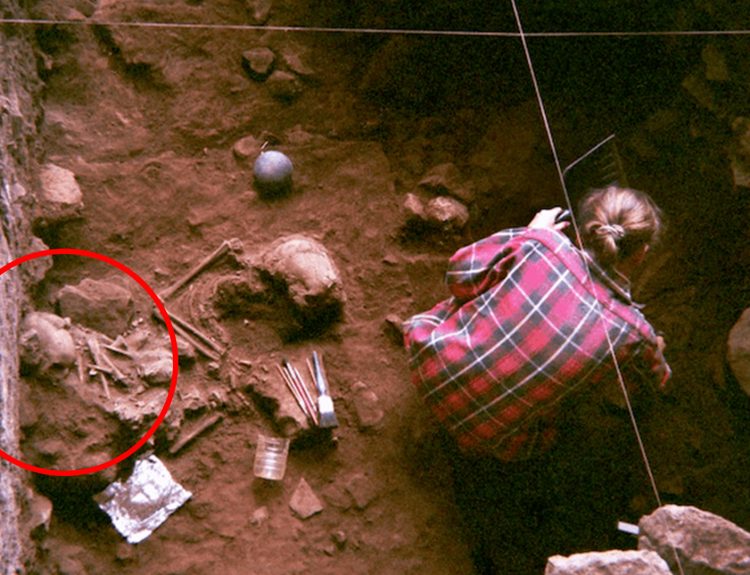A recent archaeological discovery at an excavation site in Eisleben, Germany, yielded a peculiar and baffling find – the 1,000-year-old skeletal remains of a woman who is missing her face! The bizarre find has raised more questions than answers. Who was this faceless woman and what happened to her face?
The skeleton was unearthed in a newly discovered cemetery near the site of a former palace. The graves had not been disturbed before. The woman, who was found buried in a grave next to a man who is presumed to be her husband, was interred after her facial bones and the top of her skull had been removed.
The Eisleben Archaeological Site
According to Felix Biermann of the Saxony-Anhalt State Office for the Preservation of Monuments and Archaeology, the ruins at Eisleben are quite vast, with new discoveries being made all the time. To date, the archaeology team has unearthed the remnants of an ancient castle with defensive fortifications, a royal palace that was built atop an older one, pit houses, and a cemetery.
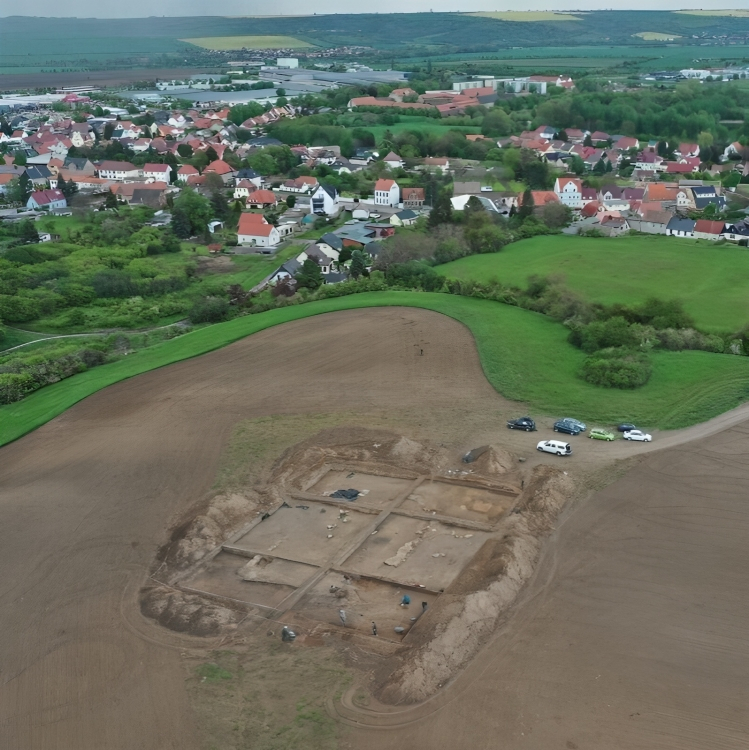
The settlement likely thrived between 750 and 1024 CE, during the time of the Carolingian and Ottonian dynasties. As Biermann explained, “There is evidence of a dense settlement. This is an important insight into the infrastructure of the imperial palace and the areas in which ordinary people lived, worked, and created the economic foundations for the Carolingian-Ottonian center of power.”
A Double Grave Full of Mysteries
When the ancient cemetery was discovered at the location, the archaeologists set about excavating the more than 70 graves to gain more understanding about the culture. In one grave – a double grave that held the remains of a man and a woman buried side by side – the research team found a number of oddities.
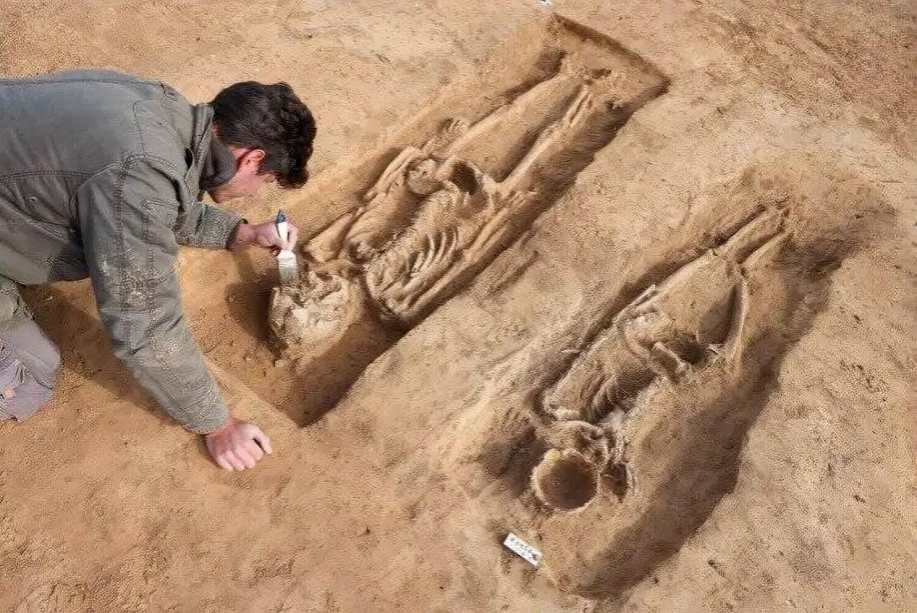
The most startling of these, of course, was the missing facial bones on the female’s skeleton. In addition to that, they were puzzled by the fact that the man had been buried with several artifacts, including a knife and a belt. No items were buried with the woman.
The Graves Reveal Some of Their Secrets
Archaeologists have been able to piece together some information about the pair buried in the double grave. As Biermann explained, the woman stood just over five feet tall when she was alive. The man was a few inches taller.

It can be assumed that the pair were a married couple, as it was not uncommon for spouses to be buried together in those days. An analysis showed that the couple lived during the ninth century. The gravesite was close to the medieval castle, suggesting that they were members of the elite social class and were probably quite wealthy.
A Clue in the Burial Goods
An examination of the items found buried with the male skeleton seem to support the idea that the couple enjoyed a high social standing in the community. As Biermann noted, “Among other things, they found a knife, a belt set, and fittings for a so-called official staff, such as those carried by generals.”
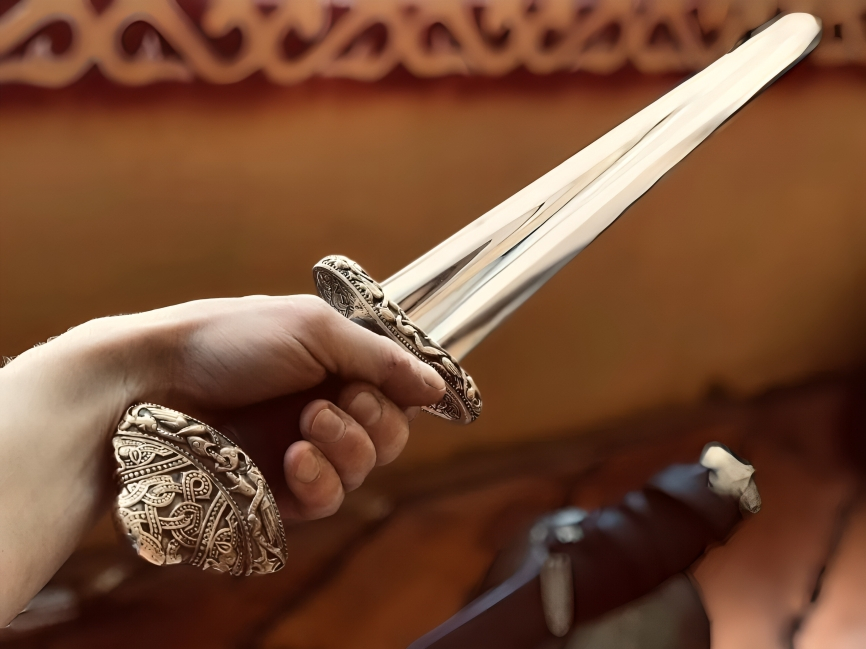
In fact, the collection of iron objects found with the man was rather impressive when compared to the other graves in the cemetery. “This is considered a dignitary’s accouterments,” Biermann explained. “So, the man might have been a socially higher-ranking person.”
The Lack of Burial Goods Is Also Telling
The faceless woman buried with the high-ranking man, however, had no such burial goods. Biermann and his team can’t explain why this is, but they can speculate. They wonder if the woman requested a Christian burial.

As Biermann explained, “The fact that there was nothing with her is very unusual. Maybe she was already Christian, but the man was more traditional. In Christianity, these kinds of additions were avoided.”
But Why Was She Faceless?
This is the burning question that Biermann and his team of archaeologists are trying to answer. They have not found other faceless skeletons, therefore the woman was an anomaly, not part of a common practice or ritual. And the grave had not been disturbed, so animals did not cause the damage.
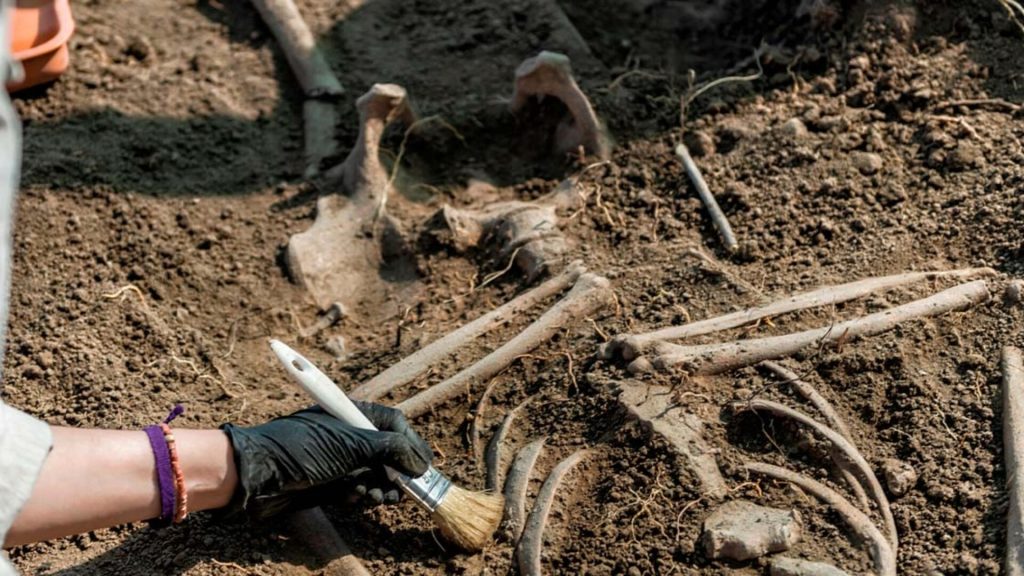
At this point, the researchers can only theorize. One possible explanation is that the woman’s face was severely damaged in a fatal accident, perhaps a fall or blunt force trauma. Victims of such accidents, however, were often buried as is … the bones were not completely removed.
The Ancient Egyptians Used Face Removal … But Not Quite So Literally
The intentional removal or defacement of the faces of pharaohs on statues and carvings in ancient Egypt, often referred to as “damnatio memoriae,” was a deliberate act of erasure aimed at eradicating the memory and legacy of a particular ruler. This practice typically occurred when a pharaoh fell out of favor with subsequent rulers or when political power shifted within the Egyptian society.
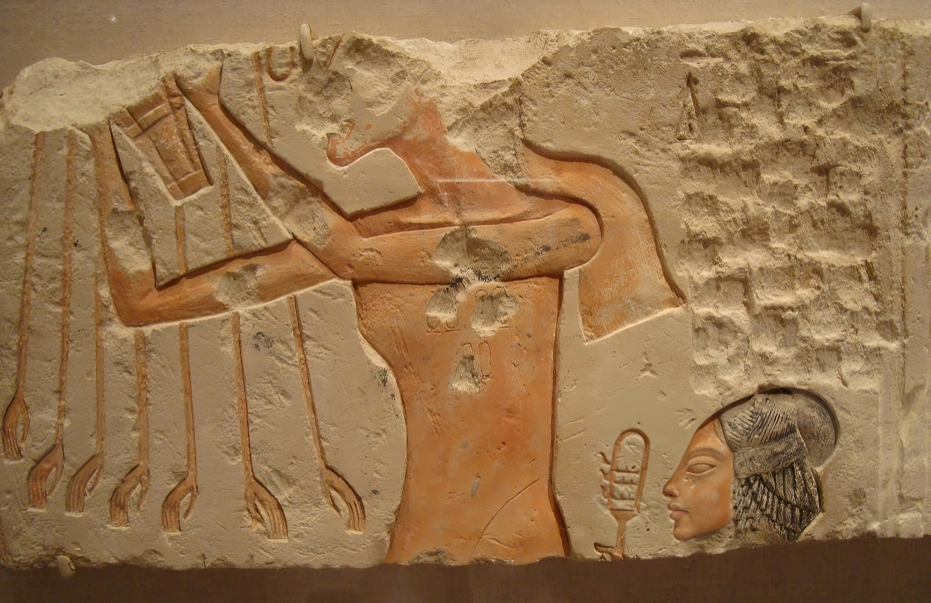
In some cases, it was a form of symbolic punishment, a way of condemning the individual even in death. The chiseling off of faces on monuments served as a visual statement, denouncing the once-revered figure and attempting to erase their existence from the historical record. Could the faceless woman found in Germany also be the victim of “damnatio memoriae”?
More Analysis May Shed Light on the Faceless Woman
Biermann stated that the next step in their research is to have the skeletal remains of the faceless woman thoroughly examined and analyzed in a laboratory. Medical and forensic experts can analyze the bones to determine the cause of death.
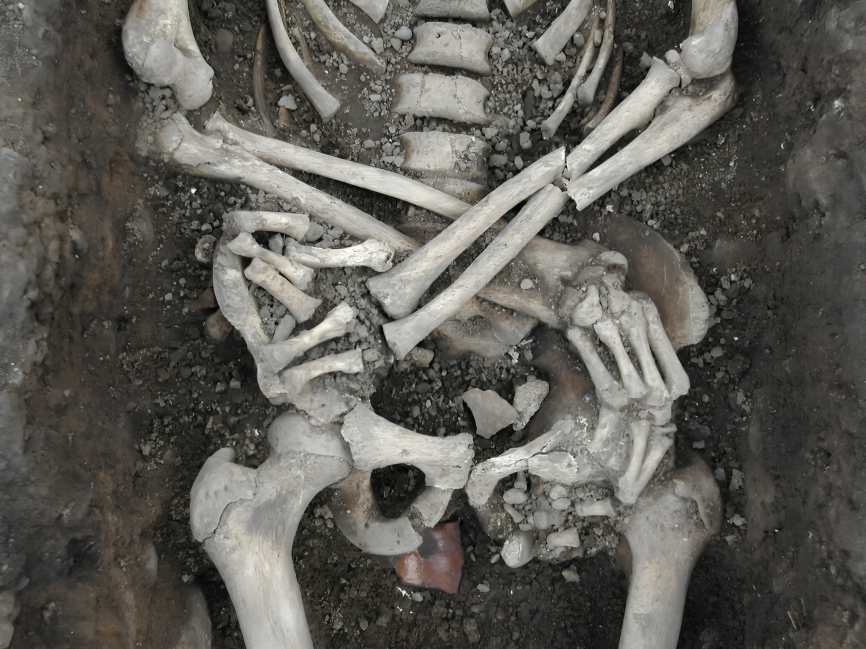
They will also look for cut marks, skeletal abnormalities, and other telltale clues that might shed some light on why the woman’s facial bones were removed prior to her burial. They should be able to determine if she exhibited signs of disease or facial deformities.

